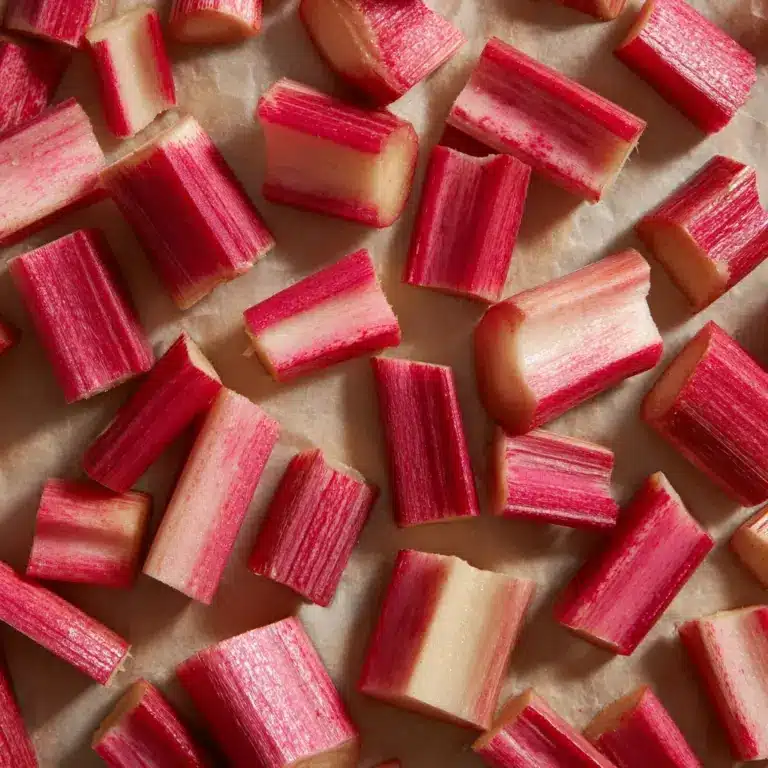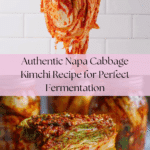Kimchi (Napa Cabbage Kimchi) Recipe
Introduction
Kimchi is a quintessential Korean dish that brightens any meal with its bold, tangy, and spicy flavors. This recipe for Napa Cabbage Kimchi guides you through the traditional process of making this fermented delight from scratch. It’s a rewarding project that results in a delicious condiment packed with probiotics and vibrant taste.
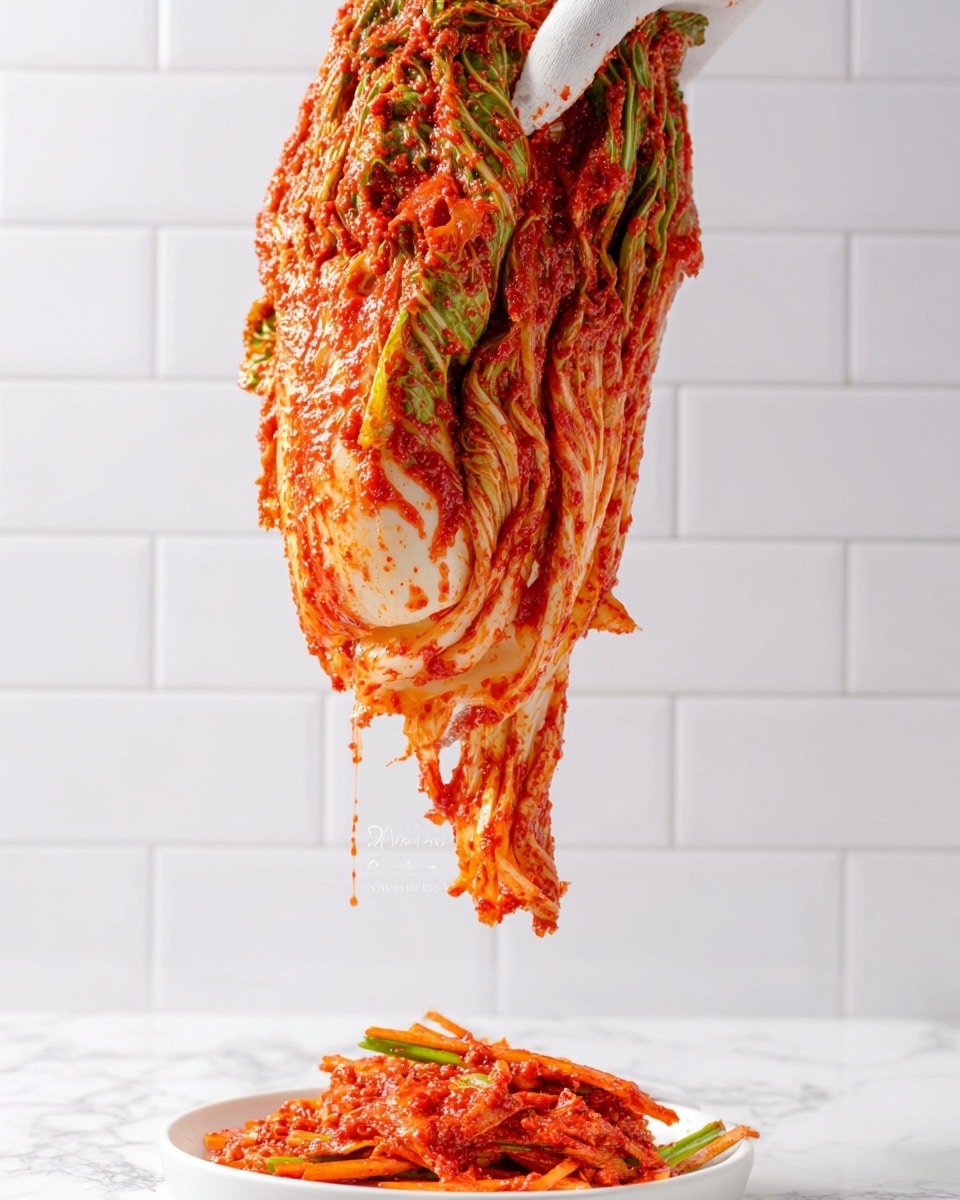
Ingredients
- 8 pounds napa cabbage (usually each head is around 4 pounds)
- About 2 cups kosher salt (or as needed for salting)
- 1½ cup water
- ⅓ cup rice flour (regular or glutinous)
- 1 large apple (cut into smaller pieces, core discarded; Fuji, Honeycrisp, Gala preferred)
- 1 large onion (peeled and cut into smaller pieces)
- 20 cloves garlic (peeled, about 3 oz/85 g)
- 2 inch knob of ginger (peeled and cut into smaller pieces)
- ½ cup fish sauce (or ¾ cup saeujot as substitute)
- 2 cups coarse gochugaru (Korean red pepper flakes, divided)
- 1 pound Korean radish (peeled and julienned)
- 6 ounces carrot (peeled and julienned)
- 4 ounces Asian chives (cut into 1 inch pieces, discard 1 to 2 inches of tough stem)
Instructions
- Step 1: Peel away and discard any undesirable outer leaves of the napa cabbage. Quarter the cabbage lengthwise, trimming excess core. Rinse each quarter thoroughly under water to remove dirt, and drain well.
- Step 2: Sprinkle kosher salt between every leaf layer of each cabbage quarter, focusing generously around stems. Stack the salted cabbages in a large bowl, cover, and weigh them down with a heavy object. Let them salt for 1½ to 2 hours, rotating every 30 minutes to ensure even salting.
- Step 3: Rinse a leaf to taste for saltiness after salting; if needed, continue salting for up to an hour more until the cabbage is bendable and well seasoned but not overly salty.
- Step 4: While salting, mix rice flour and water in a saucepan over medium heat. Stir constantly as it thickens into a translucent paste. Transfer to a large bowl and let cool.
- Step 5: Blend apple, onion, garlic, ginger, and fish sauce until smooth. Add half of the gochugaru and blend again until well combined.
- Step 6: Stir the blended mixture into the cooled rice flour paste. Add the remaining gochugaru and mix by hand (wear gloves). Fold in the julienned radish, carrot, and chopped Asian chives until evenly coated.
- Step 7: Rinse the salted cabbage quarters with fresh water 2 to 3 times to remove excess salt. Gently squeeze out excess water, taking care not to bruise the leaves and stems.
- Step 8: Using gloved hands, coat each leaf of a cabbage quarter thoroughly with the kimchi marinade. Make sure to layer some julienned vegetables between leaves for texture and flavor.
- Step 9: Fold each marinated cabbage quarter over itself to keep it compact. Repeat for all quarters.
- Step 10: Pack the kimchi tightly into sterilized glass jars or BPA-free plastic containers, leaving about 1 inch of headspace to allow for expansion during fermentation.
- Step 11: The kimchi can be enjoyed immediately, chilled, or fermented at room temperature until it reaches your preferred tanginess before refrigerating and using in various dishes.
Tips & Variations
- Use Korean pear instead of apple for a more traditional sweetness and texture.
- Adjust the amount of gochugaru to control the spice level according to your preference.
- Keep your workspace and utensils very clean to promote healthy fermentation and avoid unwanted bacteria.
- Wear gloves when mixing the kimchi marinade to protect your skin from irritation from chili flakes.
Storage
Store kimchi in airtight containers in the refrigerator. It will develop more complex flavors over time and can last several weeks to months if kept cold. For best taste, consume within 1 to 3 months, but fermentation will continue slowly. Serve chilled or at room temperature. If you prefer more mild flavor, refrigerate soon after packing to slow fermentation.
How to Serve
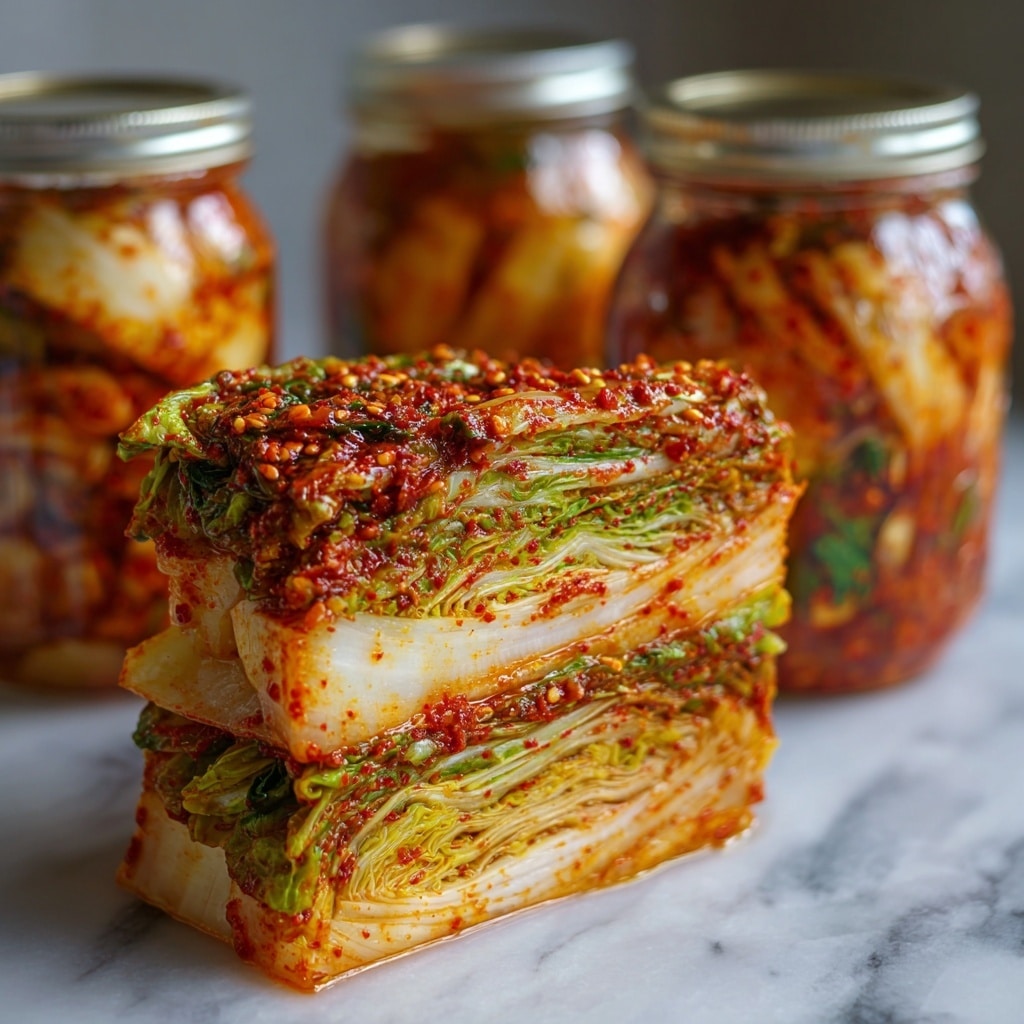
Serve this delicious recipe with your favorite sides.
FAQs
How long does it take for kimchi to ferment?
Fermentation time varies depending on temperature and personal taste. At room temperature, kimchi can start to ferment within 1 to 2 days, becoming tangier over a week. Refrigerated kimchi ferments more slowly and is usually best after 1 to 2 weeks.
Can I use regular salt instead of kosher salt?
It’s best to use kosher salt because its larger grains make it easier to control salting without overdoing it. If using regular table salt, reduce the amount since it is denser and saltier by volume.
Print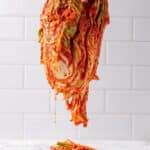
Kimchi (Napa Cabbage Kimchi) Recipe
- Total Time: 2 hours 50 minutes (including salting time)
- Yield: Approximately 2 large quart-sized jars (about 2 to 2.5 quarts) 1x
- Diet: Vegetarian
Description
This traditional Napa Cabbage Kimchi recipe delivers the authentic spicy and tangy flavors of Korean cuisine. Made by salting and fermenting napa cabbage with a flavorful marinade of rice flour paste, Korean red pepper flakes (gochugaru), fish sauce, garlic, ginger, garlic, apple, and assorted vegetables, this kimchi is a delicious and healthy fermented side dish perfect for enhancing any meal with its bold taste and probiotic benefits.
Ingredients
Napa Cabbage and Salting
- 8 pounds napa cabbage (about 2 heads, typically 4 pounds each)
- 2 cups kosher salt (or as needed for salting)
Rice Flour Paste
- 1½ cups water
- ⅓ cup rice flour (regular or glutinous)
Kimchi Marinade
- 1 large apple (cut into smaller pieces, core discarded; Fuji, Honeycrisp, or Gala recommended, Korean pear can be substituted)
- 1 large onion (peeled and cut into smaller pieces)
- 20 cloves garlic (peeled, about 3oz/85g)
- 2 inch knob of ginger (peeled and cut into smaller pieces)
- ½ cup fish sauce (or ¾ cup saeujot as substitute)
- 2 cups coarse gochugaru (Korean red pepper flakes), divided
- 1 pound Korean radish (peeled and julienned)
- 6 ounces carrot (peeled and julienned)
- 4 ounces Asian chives (cut into 1 inch pieces, discard 1–2 inches of tough stem)
Instructions
- Clean and salt the napa cabbage: Peel away and discard any undesirable outer layers of the napa cabbage. Cut each head into quarters lengthwise; trim excess core. Rinse each quarter thoroughly to remove dirt, especially the outer leaves. Drain well.
- Salt the cabbage: Generously sprinkle kosher salt between every leaf layer of each cabbage quarter, focusing more on the stems. Arrange salted quarters in a large bowl, cover and weigh down with a heavy object. Let salt for 1½ to 2 hours, rotating every 30 minutes by moving the top cabbages to the bottom.
- Check salt readiness: Tear off a leaf, rinse, and taste. The cabbage should be very pliable and moderately salty, mainly at the stem. If not salty enough, continue salting for another 30 minutes to 1 hour.
- Make the rice flour paste: Whisk together rice flour and water until combined. Cook the mixture in a saucepan over medium to medium-high heat, stirring occasionally until thick and slightly translucent. Remove from heat and let cool in a large mixing bowl.
- Prepare kimchi paste in blender: Blend apple, onion, garlic cloves, ginger, and fish sauce until smooth. Add half of the gochugaru and blend again until well combined and as smooth as possible. Transfer to the bowl with cooled rice flour paste.
- Mix kimchi marinade: Add remaining gochugaru to the bowl. Using gloved hands, mix all ingredients thoroughly. Fold in julienned Korean radish, carrot, and cut Asian chives. Set aside.
- Rinse salted cabbage: Rinse each napa cabbage quarter under fresh water multiple times (2-3) to remove excess salt, ensuring salt is rinsed off between leaves. Taste after the final rinse to judge saltiness.
- Drain excess water: Gently squeeze each quarter to remove excess water without bruising the stems or leaves.
- Marinate the cabbage: Wearing gloves, work one cabbage quarter at a time, rubbing marinade thoroughly between all leaves and layering in some julienned vegetables. Fold each quarter over itself to keep tight.
- Pack kimchi: Tightly pack the marinated napa cabbage into sterilized glass jars or BPA-free plastic kimchi containers. Leave at least 1 inch of headspace above the kimchi to allow for fermentation gases and juices.
- Fermentation and storage: Kimchi can be eaten immediately, chilled, or fermented longer to develop deeper flavors. Cut into smaller pieces before serving or using in recipes.
Notes
- Using Korean pear instead of apple gives a more authentic fruit flavor traditionally used in kimchi.
- Adjust gochugaru amount to your preferred spice level; coarser flake adds texture.
- Ensure containers used for storage are sterilized to reduce unwanted bacteria during fermentation.
- Wear gloves when mixing and rubbing kimchi to protect hands from irritation caused by chili peppers and acidity.
- Fermentation time varies by temperature; colder climates slow fermentation while warmer speeds it up.
- Prep Time: 35 minutes
- Cook Time: 15 minutes
- Category: Side Dish
- Method: No-Cook
- Cuisine: Korean
Keywords: kimchi, napa cabbage kimchi, Korean side dish, fermented vegetables, traditional kimchi, spicy kimchi, homemade kimchi, gochugaru

